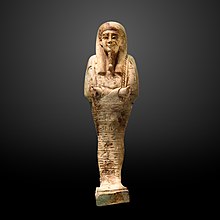Welcome, history enthusiasts, to “Top Ten Egypt”! Today, we embark on a captivating journey through the annals of Ancient Egypt’s 29th Dynasty—a period marked by Nubian rule and a remarkable resurgence of cultural achievements. Join us as we explore the grandeur and legacy of this influential chapter in Egypt’s rich history.
The 29th Dynasty: Nubian Kings on the Throne of Egypt:
The 29th Dynasty, also referred to as the Nubian Dynasty, reigned over Egypt from around 399 to 380 BCE. Hailing from Kush, a Nubian kingdom to the south, these kings represented a significant shift in power and brought about a cultural renaissance during this era. Let us delve into the impact of their reign and the cultural flourishing that ensued.
Nubian Rule and Cultural Synthesis:
The arrival of the Nubian rulers in Egypt brought about an enriching cultural synthesis between Nubian and Egyptian traditions. The Nubians embraced Egyptian religious beliefs, rituals, and customs, while also incorporating their own cultural elements, resulting in a unique blend of traditions. This synthesis was particularly visible in art, language, and religious practices.
The Triumph of Taharqa:
Among the notable pharaohs of the 29th Dynasty was Taharqa, who ascended the throne with immense ambition and prowess. His reign witnessed military successes, diplomatic alliances, and major construction projects. Taharqa’s tomb, located at Nuri in Sudan, stands as a testament to his grandeur and highlights the cultural and artistic achievements during this era.
The Temple of Amun at Gebel Barkal:
A highlight of the 29th Dynasty’s architectural legacy is the Temple of Amun at Gebel Barkal, located in present-day Sudan. This majestic temple complex served as a religious center, dedicated to the worship of Amun-Ra. The temple’s imposing presence and intricate details reflect the skill and artistic finesse of the time, captivating visitors to this day.
Revival of Egyptian Art:
The 29th Dynasty marked a period of resurgent artistic endeavors. Egyptian art witnessed a revival, with a return to traditional styles and iconography. Sculptures, reliefs, and hieroglyphic inscriptions thrived under Nubian patronage, showcasing a remarkable level of craftsmanship and attention to detail. The artistic resurgence during this era left an indelible mark on the history of Egyptian art.
Legacy and Cultural Endurance:
While the 29th Dynasty’s rule was relatively short-lived, its impact on Egyptian history and culture was substantial. Despite eventual challenges and the rise of subsequent dynasties, the Nubian influence and cultural synthesis endured, leaving an enduring legacy in Egypt’s cultural tapestry and acting as a bridge between the kingdoms of Nubia and Egypt.
The 29th Dynasty of Ancient Egypt, under Nubian rule, brought about a vibrant period of cultural synthesis and artistic resurgence. The Nubian kings left an indelible mark not only on the political landscape but also on the realms of art, architecture, and religion. Join “Top Ten Egypt” as we unravel the treasures and legacies of this extraordinary dynasty.
Continue your journey with “Top Ten Egypt,” where ancient history comes alive. Discover the splendor of the 29th Dynasty as you explore the magnificent temples, artistic masterpieces, and cultural intersections that defined this captivating era of Ancient Egypt.



Comment (0)